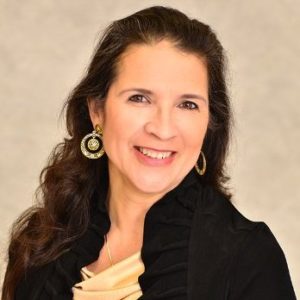The following post was authored by Martha C. Artiles and is being shared with permission from our partner, C5 Consulting LLC. This post is the second post of a two-part series focusing on helping employers build a pipeline for talent with disabilities. Click here to view the first post in this series.
Reaching Out – Create an Approach
Once you have identified several potential sourcing organizations (VR, community based organizations, non-profits, and organizations on campuses/universities), consider your approach to these organizations. Consider a method similar to how you would approach defining a vendor.
- Create a prioritized list of potential organizations
- Conduct Informational Interviews
- Ask for references
- Conduct on-site visits, and
- Leverage your peer network
Just as you would if you were interviewing a candidate, you will be interviewing these sources to find the best match for your needs. When checking references, don’t overlook your own peer network- they may have other recommendations for your organization to interview.
Selection Process
Once you have understood your needs and created your checklist, start interviewing designated pipelines.
- Interview and tour their facilities
- What training is offered?
- What population is served?
- What are the skill sets available?
- Is the contact business savvy?
- Invite them to tour your facility and meet your Hiring Managers
You want a relationship with an organization that understands your culture, your needs and your priorities
Welcoming Talent
The concept of Diversity started over 30 years ago when large corporations understood they needed to do more than the basics of Affirmative Action to access and retain talent that was different. They understood that in order to attract and retain the best and brightest that now looked different they had to take a different approach. Initially, the focus was on visible dimensions of diversity such as race and gender.
It then broadened to include others dimensions of diversity but still many of them visible aspects of diversity.
The Diversity efforts then began to become more global and required a way to globally address the efforts while also providing a context for all groups to be included – Inclusion was then born. Diversity is often referred to getting diverse individuals into the Board Room whereas Inclusion is about including diverse individuals at the business table of the Board Room. Inclusion explicitly includes ALL groups – including the main stream group in a manner than no group or individuals feels excluded or disengaged.
Elements of a truly inclusive organization and culture includes simply considering our senses:
- Do you see individuals that are diverse across all lines and levels in the organization for those diversity elements that are visible. Do you also SEE them in your collateral or branding materials that are used at recruiting fairs or even on your website? To be welcoming, take a look at your website and think about how an applicant would know that your company is a place of inclusion.
- Do you hear many voices when it comes to developing and delivering your products and services? Do you HEAR them in all aspects of the organization – Finance, Marketing, Operations, Human Resources, Communications,…
- Does your organization look like the diversity you are attracting – does your website, company fact sheets and the representatives you send to career fairs and conferences reflect this?
- Does your organization feel inclusive- do all employees feel like they have an opportunity to advance and contribute? If you have an employee survey, what does it tell you about how engaged your employees are feeling?
This does not need to be difficult – it is simply a matter of looking at your organization through a different lens and perspective. If you have an Employee Resource Group, they are most helpful in being honest with you and your organization about how inclusive it truly is and where the opportunity areas may reside.
Beyond all of these resources and pipelines we have reviewed, it is important to note that many individuals with disabilities will and do apply for employment as individuals – and not through any organizations.
Continuous Improvement
This is a marathon and not a sprint. Once you have set the strategy, review and update on an annual basis to include what you have learned. Also, engage your own employees for their input and support – especially critical if you have an employee network group/affinity group (ERG) that focuses on disability. They can be one of your most important partners to help you determine the best community partners. Focus on small steps but realize that more successes will occur as the organization as a whole commits to disability inclusion.
For more tips and advice on building a pipeline for talent with disabilities, reach out to Martha directly by emailing Martha.Artiles@Consultc5.com.

She served on the Board of Directors for US Business Leadership Network (USBLN®), the Women’s Business Enterprise National Council (WBENC), WEConnect Canada, and the Executive Board of the Silicon Valley National Society of Hispanic MBAs. She is a founding member of the Conference Board’s Workforce Diversity Council and the World Economic Forum’s Global Gender Gap Agenda Council.
She continues to play a leadership role with underserved populations such as People with Disabilities as co-lead for the Silicon Valley BLN.
